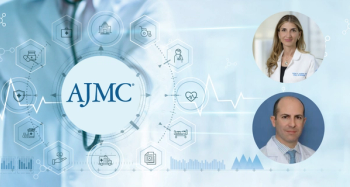
Evolving Versions of the Oncology Care Model
Transcript:
Bruce Feinberg, DO: Kavita, Ted mentioned the OCM [Oncology Care Model] 1.01 and OCM 2.0. I think I even read something about a 3.0. Where are we, how many versions are there, and how are they different? And to what extent do they try to address some of the things that have come up in the conversation?
Kavita K. Patel, MD, MS: The current model in the Medicare program—the Oncology Care Model—is what everyone affectionately refers to as OCM 1.0. The 2.0, more specifically, is something that Ted and I, leaders from COA [Community Oncology Alliance], leaders from community practices, as well as the payment experts in the country have tried to identify what does it really mean to take risks if you’re not taking any risks?
All these elements are what we’re affectionately also calling 2.0. I’m personally not aware of a 3.0, but I wouldn’t be shocked by that. Or maybe there are a lot of people thinking about the next phases of cancer models, and you can put those into the sequence. All of them are struggling to identify what has worked in the OCM. That’s something that we’re trying to do—what’s worse, and then what needs to be improved upon. I think for this kind of conversation around immunotherapy, novel therapies—how do we actually change the way we treat the drugs?
Ted said it better, that this is really about reliable price prediction. People talk about cost prices and charges, conflating the 3. But really, how can we talk about what the financial benchmark in an era is when survival—every single cancer meeting, even the small regional meetings—are now breakthrough meetings because some literature about the way we give .... is being changed dramatically? The idea that a government set of bureaucrats can make quarterly adjustments to a spreadsheet about what is “novel” is actually hysterical. That’s where we are for 2.0 and 3.0. I think everyone is trying to think about what’s not working and how do we improve upon it.
Bruce Feinberg, DO: Concur?
Ted Okon, MBA: Yeah, absolutely. I think we have literally 1 sheet of paper where we have all the aspects of the 1.0 model, as well as what’s right and what’s wrong. The other side of the paper is the 2.0 model. As Kavita said, we’ve had a big team that’s been sitting down to meet regularly. We talk about all this all the time and say, “What’s wrong? What’s wrong with price prediction? What’s wrong with risk adjustment? What’s wrong with things like attribution?” We look at that and say, “How should that be different?”
The other thing is the idea that what do we do, as Rich said, with this artificial 6-month episode. We all know that the original plan was, “Let’s take all the services, put it into this 6-month bucket, and then ultimately we’ll drop the drugs into it, and it’ll all be bundled.” In fact, that’s where they would still like to go, in terms of CMS and CMMI [Center for Medicare & Medicaid Innovation]. But we’re looking at it and saying, “How do we do differently?” As Kavita said, “How do we look differently, especially at the drug piece?”
I always say this all the time. I said, “We are committed, as the oncology community, to get paid for services, based on value. Guess what? The same should be on the drug side. I know that we’ve had over 80 meetings with drug companies looking at the idea of value-based arrangements. Whether you’re talking about indication-based pricing or outcomes pricing, the interesting thing is a lot of companies now are doing this on the commercial side. They’d like to do it on the Medicare side, but there are impediments: Medicaid best price, ASP [average sales price]. What’s interesting is the government has recognized this and actually has a rule out that would pull some of those off.
Senators Bill Cassidy [R-Louisiana] and Mark Warner [D-Virginia] have a draft bill out that we commented on. They want to basically exempt some of these programs from Medicaid best price; the AKS, the anti-kickback statute; Stark Law; ASP; and things like that.
Think about it this way. Remember that nice little box that Macintosh came out with, basically Apple? That was the first box. That was 1.0. Look at now where it is, not only in terms of your computer, but look at your iPad and everything like that. Now we must be on 50.0. The same thing holds true here. You’re not going to say this is the perfect model and implement it and say, “This is it.” So we are looking at 2.0. In fact, as Kavita knows, we’ve talked about what should be in 2.0, what will probably be pushed at 3.0, 4.0, and 5.0. But we need to move forward by saying that this was a good attempt. The model itself is sound and the concept behind it, but there’s a lot of the implementation that’s lacking that doesn’t account for, for example, the I/O [immuno-oncology] drugs coming into the market.
Newsletter
Stay ahead of policy, cost, and value—subscribe to AJMC for expert insights at the intersection of clinical care and health economics.








































